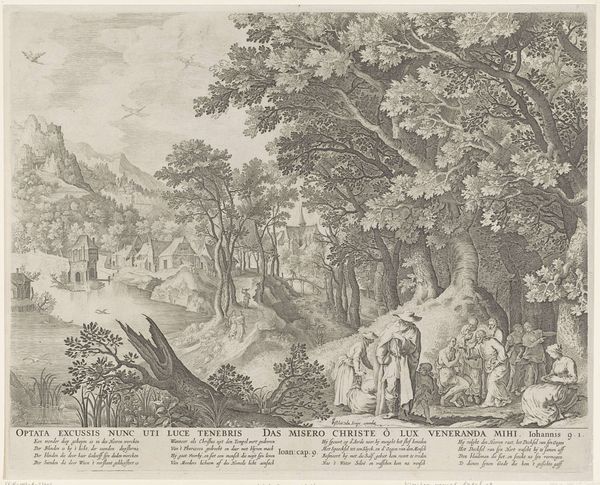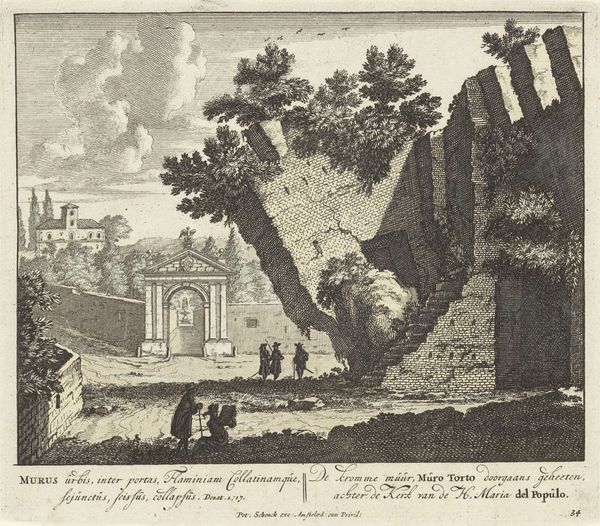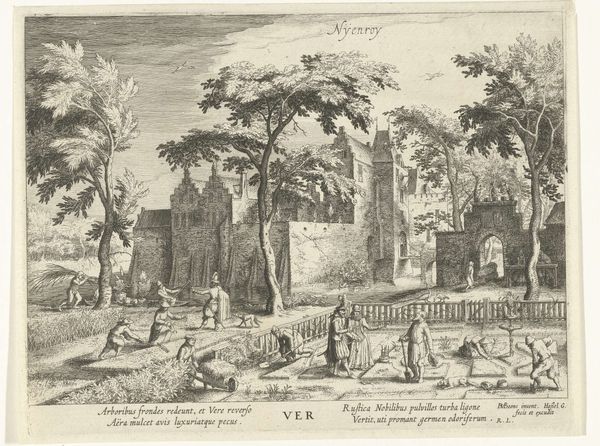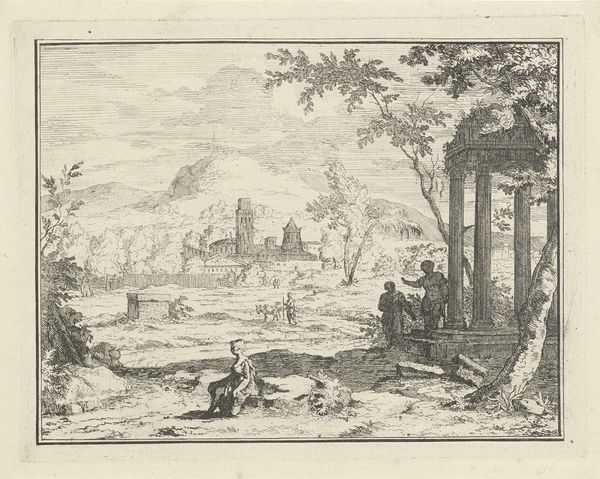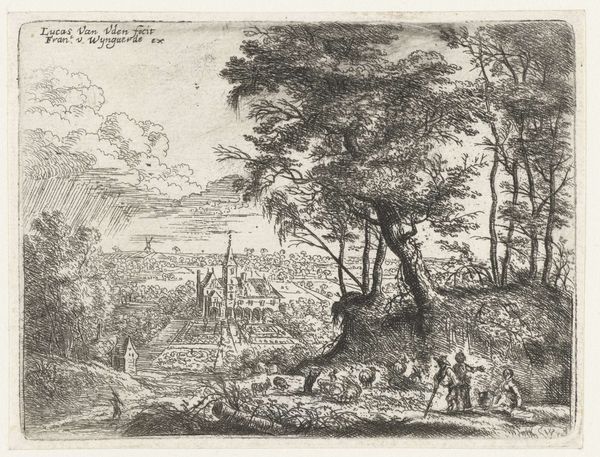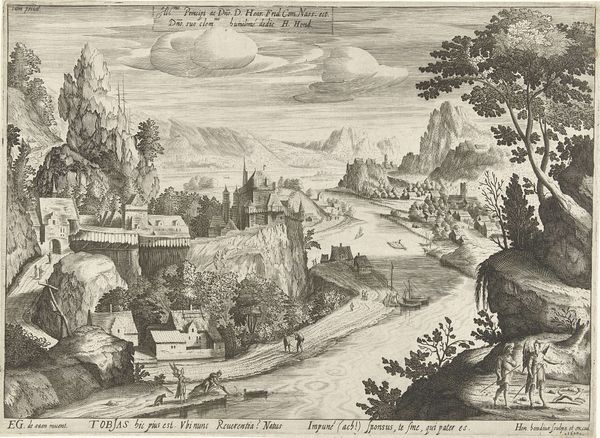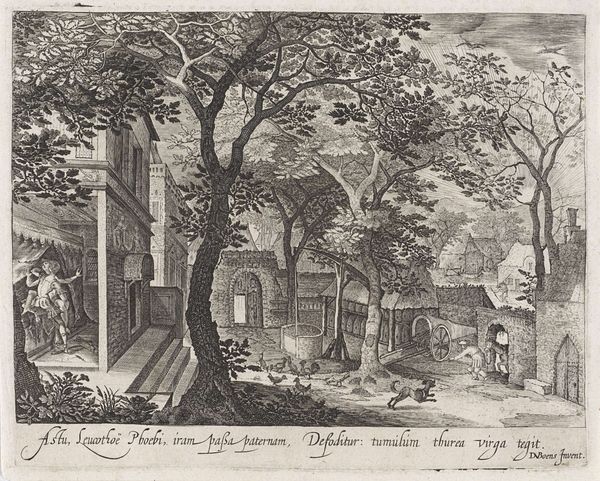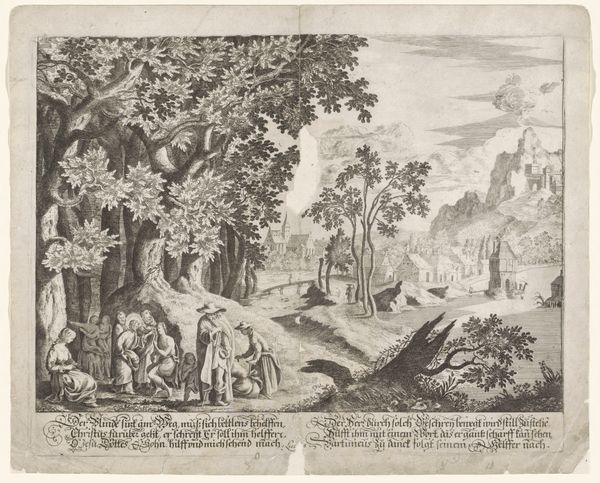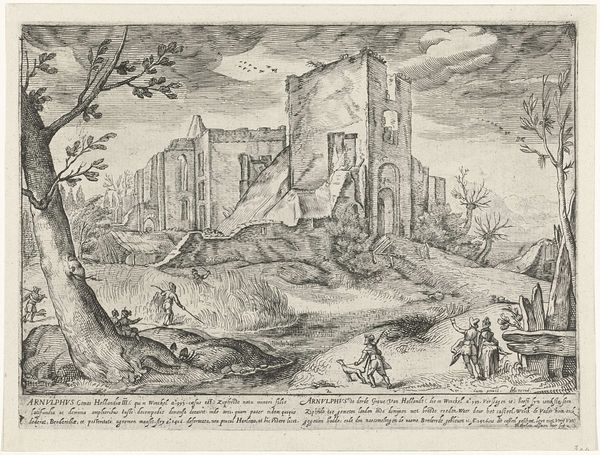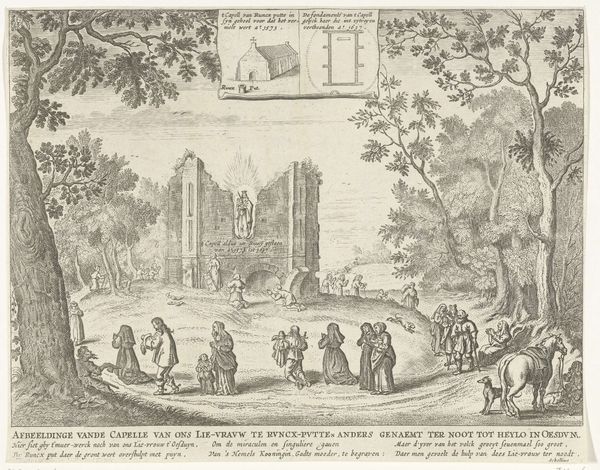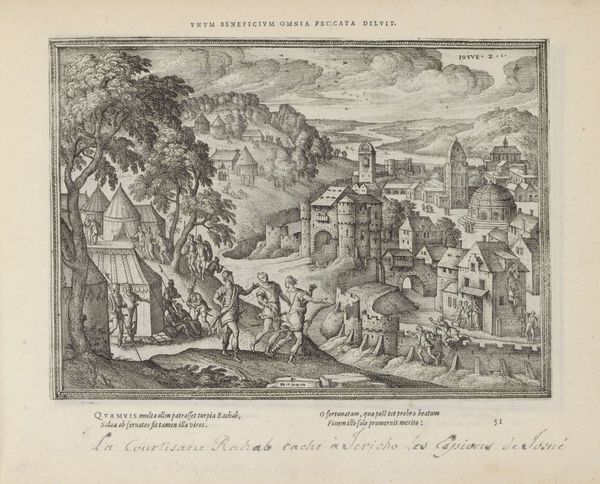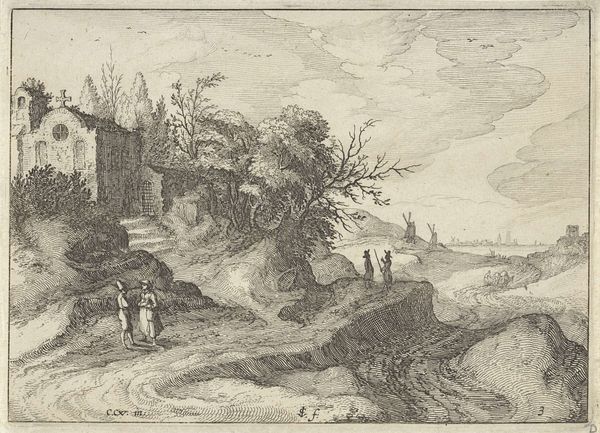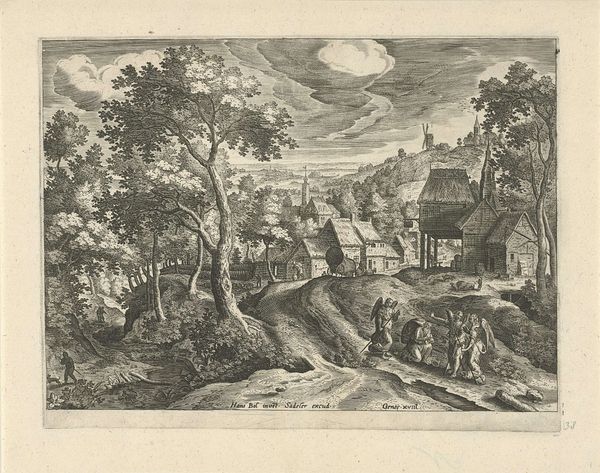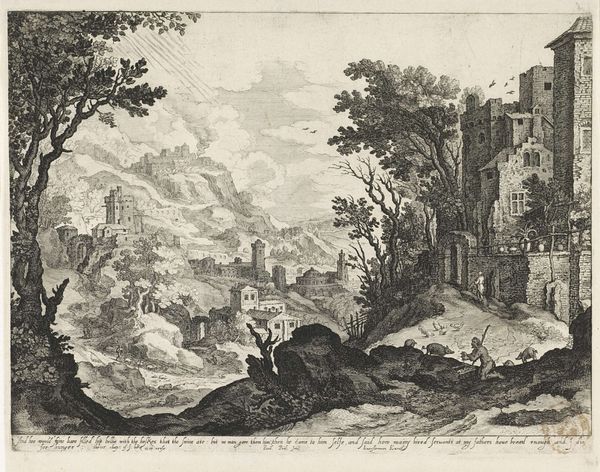
print, engraving
#
allegory
#
baroque
# print
#
landscape
#
history-painting
#
engraving
Dimensions: height 193 mm, width 270 mm
Copyright: Rijks Museum: Open Domain
This etching, made in 1746 by an anonymous Dutch artist, satirizes Prince Charles Edward Stuart, also known as the Young Pretender, and his failed attempt to claim the British throne. The print uses visual codes and historical associations to discredit Stuart and his Jacobite supporters. We see Stuart fleeing a chaotic scene littered with symbols of defeat: broken weapons, a discarded crown, and crumbling architecture. These elements reference the collapse of Stuart’s rebellion and the ruinous consequences of his actions. The inscription "Mali principii malus exitus" warns of the bad end to a bad beginning. The artist is clearly commenting on the political events of his time. The print supports the Protestant establishment and mocks those who threatened it. To understand this image fully, it helps to research the history of the Jacobite rebellion, and the religious and political conflicts that shaped 18th-century Europe. The image is contingent on its social and institutional context.
Comments
No comments
Be the first to comment and join the conversation on the ultimate creative platform.
